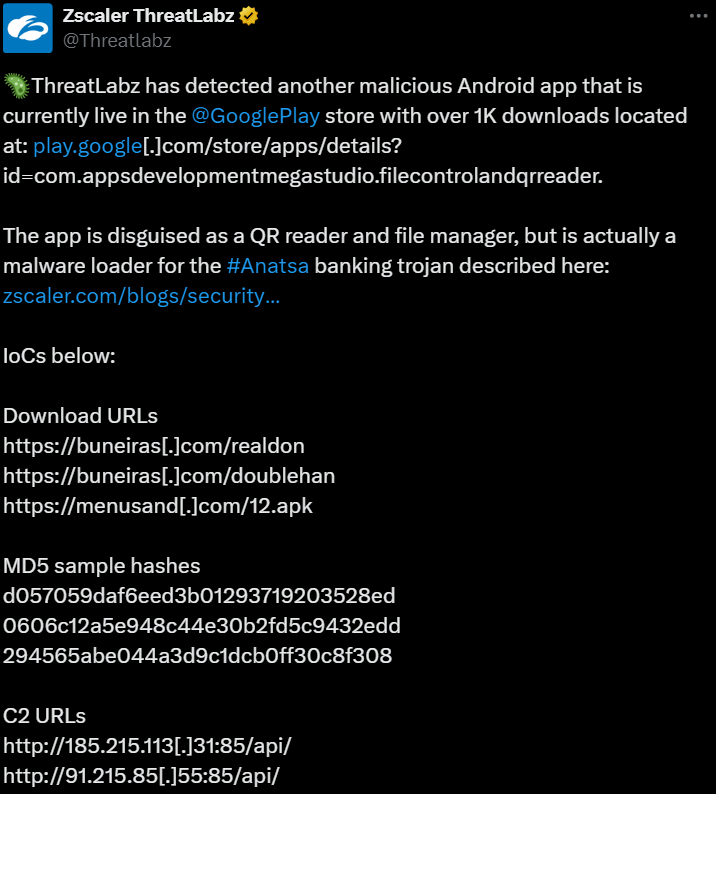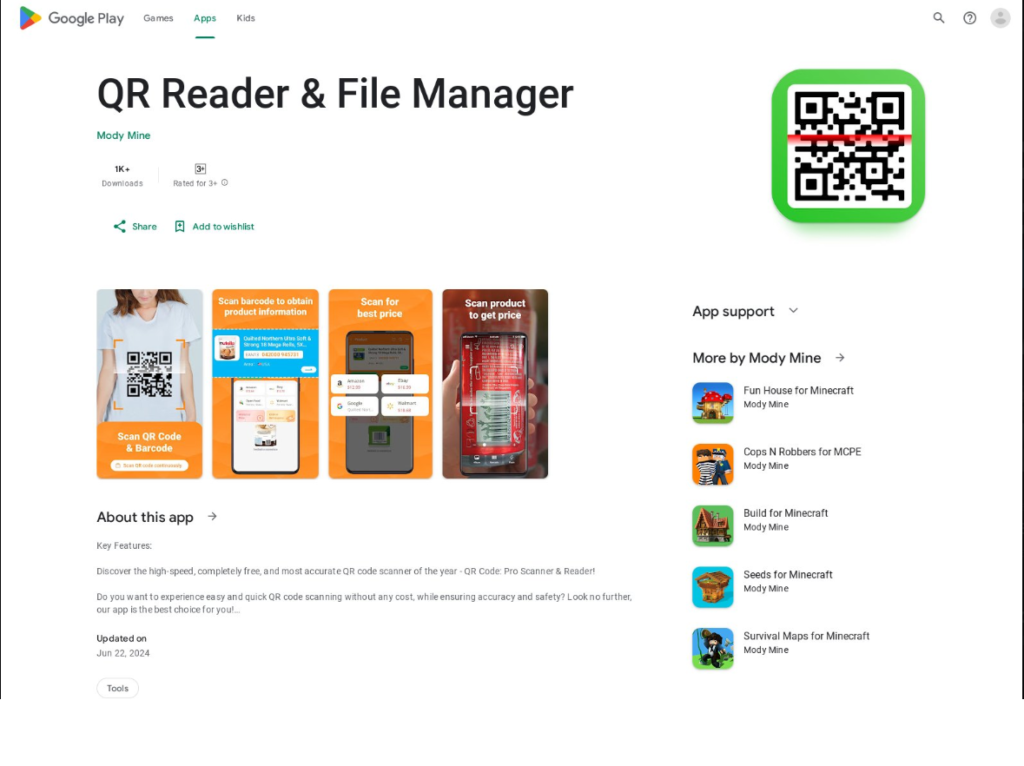Introduction To Anatsa Banking Trojan:
Alert Scam Warriors! In a troubling development for Android users, the Anatsa banking trojan has resurfaced on the Google Play Store, posing a significant threat to millions of users. Just weeks after being assured that malicious apps had been eradicated, reports now confirm the presence of a new variant of this dangerous malware. This revelation raises critical questions about the security of the Google Play Store and underscores the persistent risks faced by Android users.
A Brief Overview of the Anatsa Threat
The Anatsa malware is notorious for its ability to exfiltrate sensitive banking credentials and financial information from global financial applications. Initially, it infiltrates devices through seemingly innocuous dropper apps. Once installed, it scans for banking apps, overlays fake login pages to capture credentials, and intercepts SMS passcodes, ultimately draining victims’ bank accounts.
Recent History of Anatsa on Google Play Store
In recent months, Android users were warned about 90 dangerous apps with 5.5 million installs on the Play Store, which were subsequently removed by Google. Despite these assurances, a fresh warning from cybersecurity firm Zscaler indicates that the Anatsa malware has once again found its way onto the platform. This time, the malware was disguised as a QR reader and file manager app, illustrating its ability to evade detection through clever disguises.

The Mechanism of Anatsa Malware
Anatsa’s success largely hinges on its use of clean-looking dropper apps. These apps, often trivial tools like PDF and QR code readers, seem harmless but serve as conduits for the malware. Once the dropper app is installed, it downloads and installs the Anatsa trojan, which then begins its malicious activities.
The Persistence of the Threat
The persistence of the Anatsa malware highlights a significant challenge in maintaining the security of the Google Play Store. Despite rigorous security measures, the evolving tactics of cybercriminals continue to find loopholes, allowing them to deploy sophisticated malware. The latest detection by Zscaler’s ThreatLabz underscores the ongoing vigilance required to protect users.
Recommendations for Android Users
Given the renewed threat posed by Anatsa, it is crucial for Android users to adopt stringent security practices. Here are some key recommendations:
- Stick to Official App Stores: While the Google Play Store is not infallible, it remains safer than third-party stores. Avoid downloading apps from unknown sources and ensure Google Play Protect is enabled on your device.
- Scrutinize App Developers and Reviews: Before downloading an app, check the developer’s credentials and read user reviews. Look out for any red flags indicating fake reviews or suspicious activity.
- Be Cautious with App Permissions: Only grant necessary permissions to apps. For example, a torch or star-gazing app does not need access to your contacts or phone. Be particularly wary of granting accessibility permissions that could allow an app to control your device.
- Avoid Clicking on Suspicious Links: Do not click on links in emails or messages that directly download apps or updates. Always use official app stores for installations and updates.
- Exercise Caution with QR Code and PDF Reader Apps: Given the specific threat posed by these types of apps, be especially cautious when downloading them.

The Role of Google in Mitigating Malware Threats
While users can take steps to protect themselves, the onus is also on Google to continually enhance the security of its Play Store. This involves not only removing malicious apps but also improving detection mechanisms to prevent such apps from being uploaded in the first place. Google’s response to the initial wave of Anatsa-infected apps was swift, but the reappearance of the malware suggests that more robust measures are needed.
Conclusion
The reemergence of the Anatsa banking trojan on the Google Play Store is a stark reminder of the persistent threat posed by malware. Despite previous assurances and efforts to clean the platform, cybercriminals continue to find ways to exploit vulnerabilities. For Android users, staying informed about these threats and adopting robust security practices is essential to safeguarding personal and financial information.
As Google works to bolster its security measures, the collaborative efforts of cybersecurity firms, app developers, and users themselves will be crucial in creating a safer digital environment. In the meantime, vigilance and caution remain the best defenses against the ever-evolving landscape of mobile malware threats.
At The Scam Protector, we save people from getting scammed by raising awareness and informing them about prevalent online scams. You can do it too just by joining our tribe on Twitter , Facebook, Quora, Reddit, LinkedIn.




